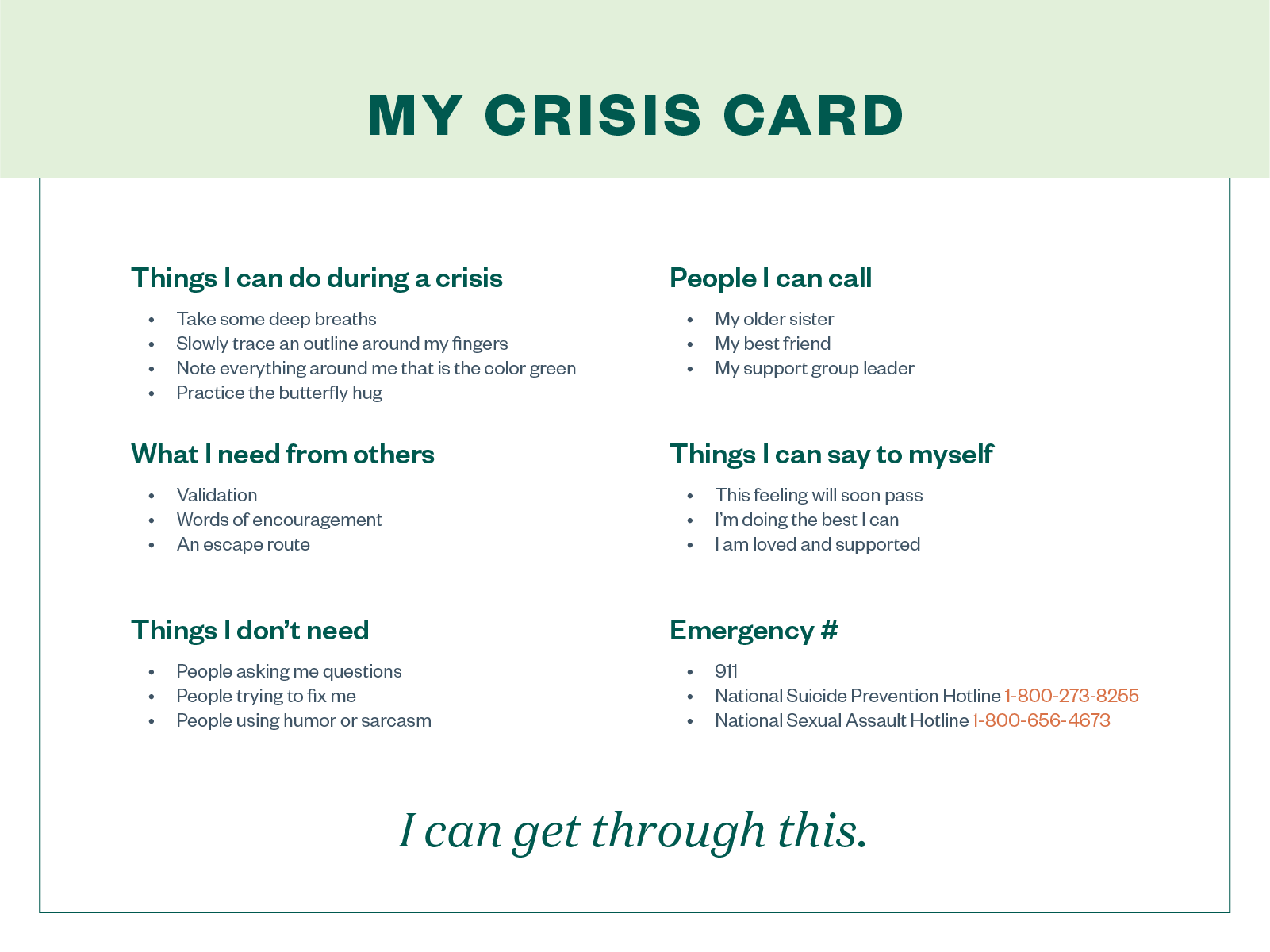Saprea > Online Healing Resources > Our Approach >Healing Resources: Creating a Back-up Plan
What Is a Back-up Plan For?
Survivors of childhood sexual abuse can experience a variety of long-term effects connected to their trauma. And even as they work to manage these effects through various tools and healing practices, they may still be caught off guard by certain instances where the trauma of the past suddenly feels very real and present. This is particularly the case with triggers and the responses they can cause in the brain and body, such as flashbacks, panic attacks, dissociation, acute anxiety, or suicide ideation.*
And while survivors can practice tools such as Mindfulness to help ground themselves in these moments of emotional distress, it can still be challenging to soothe an alarmed limbic system once it has been triggered, especially if the symptoms that arise feel particularly overwhelming. This is why, on top of practicing grounding techniques and other strategies, it is helpful for survivors to have a back-up plan, should they find themselves in a situation where certain symptoms or trigger responses escalate into a level of distress that may require additional or immediate support.
What Is a Crisis Card?
In moments of debilitating distress, it can be difficult to remember where we are, when we are, and why we’re experiencing such an alarming response. Such panic and confusion can make it all the more difficult to recollect what steps we need to take next or who we can reach out to. That is where the crisis card comes into play.
This card is something you can keep close, and quickly reference should a moment of emotional crisis arise. It serves as a reminder of your back-up plan and the support system that is available to you in moments of severe distress. All you have to do is fill out the information and print the card to keep in easily accessible places (e.g., your wallet, car, office, home, etc.).
Your crisis card contains actions you can take, people you can call, things people can do (or avoid doing) for you, and a positive statement to encourage you during difficult times.
Below is an example of information you can include in your crisis card.

What Other Precautions Can I Take?
While crisis cards are useful for general, everyday activities, you may want to modify your back-up plan for certain situations that may pose very specific triggers. For instance, before attending a family gathering or a holiday event, you may want to establish a new set of precautions based on prior experience, family dynamics, and potentially triggering topics. These precautions might include:
01
Identify People Who Support You
02
Determine How Your Supporter Can Best Help You
03
Plan Out What You Will Do in Potentially Triggering Situations
04
Make a List of Positive Affirmations
05
Prioritize Your Needs
For tips on creating a safety plan specific to holiday events, visit our blog post about handling the holiday season here.
As you brainstorm and create your back-up plan, you are practicing:
- Acknowledgement by recognizing the trauma-related symptoms you experience, as well as the situations, settings, or events that may trigger those symptoms.
- Mindfulness by being attune to your emotional and physical needs and what you can do to attend to those needs, particularly in times of crisis.
- Aspiration by setting a plan based on the belief that you can manage the effects of your trauma through intentional preparation, practice, and support.